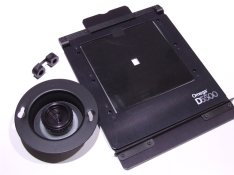David Lyga
Member
Interesting question:
When you wish to print only a tiny portion of a negative, say only 1/10th of the whole area, does masking the rest of that negative (so that there is then no extraneous projection of that 'waste' onto the easel) benefit the printed image in that that image retains greater contrast (because it is now not having to compete with the extra ambient light that masking has prevented)?
It seems obvious that masking would allow this fortunate circumstance to happen. But, if you choose to print the WHOLE negative, then would that small portion (indeed, the whole print) suffer slightly from ambient lighting presented from the whole negative's projection?
Perhaps it sounds foolish to present this as a 'dilemma', but it would be interesting to dissect whether or not that isolated small section (actually, the whole print if the whole negative is printed) would suffer as a result, and that the whole negative being printed would, thus, have to be printed to a slightly greater contrast in order to mitigate all that ambient light. Does any of this make any sense? (If not, carry this to a theoretical extreme: if you printed 1/100th of the negative, all that extraneous light from an unmasked negative would seemingly HAVE to have a slight fogging effect.) - David Lyga
When you wish to print only a tiny portion of a negative, say only 1/10th of the whole area, does masking the rest of that negative (so that there is then no extraneous projection of that 'waste' onto the easel) benefit the printed image in that that image retains greater contrast (because it is now not having to compete with the extra ambient light that masking has prevented)?
It seems obvious that masking would allow this fortunate circumstance to happen. But, if you choose to print the WHOLE negative, then would that small portion (indeed, the whole print) suffer slightly from ambient lighting presented from the whole negative's projection?
Perhaps it sounds foolish to present this as a 'dilemma', but it would be interesting to dissect whether or not that isolated small section (actually, the whole print if the whole negative is printed) would suffer as a result, and that the whole negative being printed would, thus, have to be printed to a slightly greater contrast in order to mitigate all that ambient light. Does any of this make any sense? (If not, carry this to a theoretical extreme: if you printed 1/100th of the negative, all that extraneous light from an unmasked negative would seemingly HAVE to have a slight fogging effect.) - David Lyga
Last edited by a moderator:











